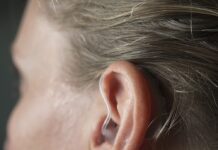
The benefits of certain foods are common knowledge: Grapefruit combats heart disease, carrots are good for your vision, and tea is an antioxidant powerhouse. But some surprising foods — lentils? really? — are good for your hearing.
The old adage “The best defense is a good offense” doesn’t just apply to games and sports — it’s true of your hearing health as well. Much benefit can be derived from good defensive strategies to protect your hearing, but why not take the offensive and use nutrition to ensure your ears are as healthy as they can be to begin with? Here we offer four surprising foods you might not realize can maintain your hearing health.
Fish
We all know omega-3 fatty acids are the good fats, the ones that help fight heart disease, but results from a study in the American Journal of Clinical Nutrition show just how far-reaching the benefits are. The 18-year study of more than 65,000 American women found that those who ate at least two servings of fish each week had a 20 percent lower risk of hearing loss. The authors credit the omega-3 fats, which maintain robust blood flow in the cochlea (inner ear), keeping your hearing in tip-top shape.
Pulses
Pulses are the edible seeds of certain legumes. Common types are chickpeas (aka garbanzo beans), lentils, dry peas, and beans. These superfoods are not only good sources of plant-based protein, fiber, and iron, they also contain ample amounts of folate, which has been shown to protect against hearing loss. There’s such a variety of pulses and so many ways to prepare them, you could eat them every day and not get bored!
Wild-mushroom fans, rejoice! Wild mushrooms — think morels, oyster mushrooms, and chanterelles — are a rich source of vitamin D, a nutrient that has been linked to cochlear health through its role in calcium metabolism. These mushrooms all have something called ergosterol that, when exposed to the sun’s ultraviolet radiation, is converted to vitamin D. You can also find commercial mushrooms with this same nutritional punch; just look for labels such as “UV treated” and “high in vitamin D.”
Brown Rice
What’s not to love about brown rice? It’s delicious, versatile — and high in magnesium! Deficiency in magnesium can kill hair cells, which are the sensors in your inner ear that capture sound vibration, turn them into signals, and transmit the signals to your brain. Plus, an abundance of magnesium has been shown to actually guard against noise-induced hearing loss.
Please feel free to contact us to find out more about the link between nutrition and hearing health! Dr. Izzy and his Staff can be reached at 732-818-3610.
Fish: Curhan SG, et al. Fish and fatty acid consumption and the risk of hearing loss in women. American Journal of Clinical Nutrition. 2014;100(5):1371–1377. Pulses: Pulses. Health + Nutrition. http://pulses.org/nap/health-nutrition/. Accessed Nov. 14, 2017. Martínez-Vega R, et al. Folic acid deficiency induces premature hearing loss through mechanisms involving cochlear oxidative stress and impairment of homocysteine metabolism. FASEB Journal. 2015;29(2):418–432. Mushrooms: Taneja MK, Taneja V. Role of vitamin D in prevention of deafness. Indian Journal of Otology. 2012;18(2):55–57. Keegan RJH, et al. Photobiology of vitamin D in mushrooms and its bioavailability in humans. Dermatoendocrinology. 2013;5(1):165–176. Rice: Coates L. The effects of magnesium supplementation on sensorineural hearing loss: A critical review of the literature. https://www.uwo.ca/fhs/csd/ebp/reviews/2009-10/Coates.pdf. Accessed Nov. 14, 2017. Ho WP. 8 Foods High in Magnesium. https://theconsciouslife.com/foods-high-in-magnesium.htm. Accessed Nov. 14, 2017.







